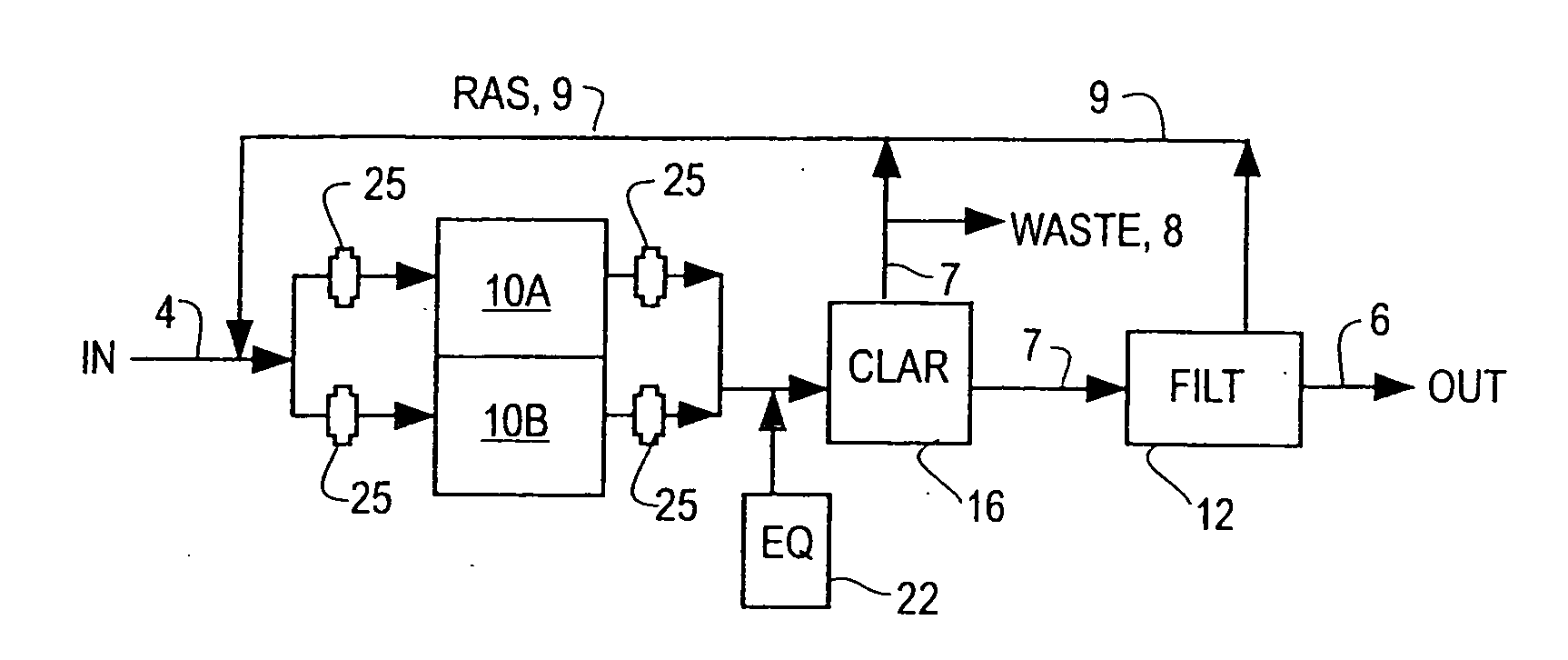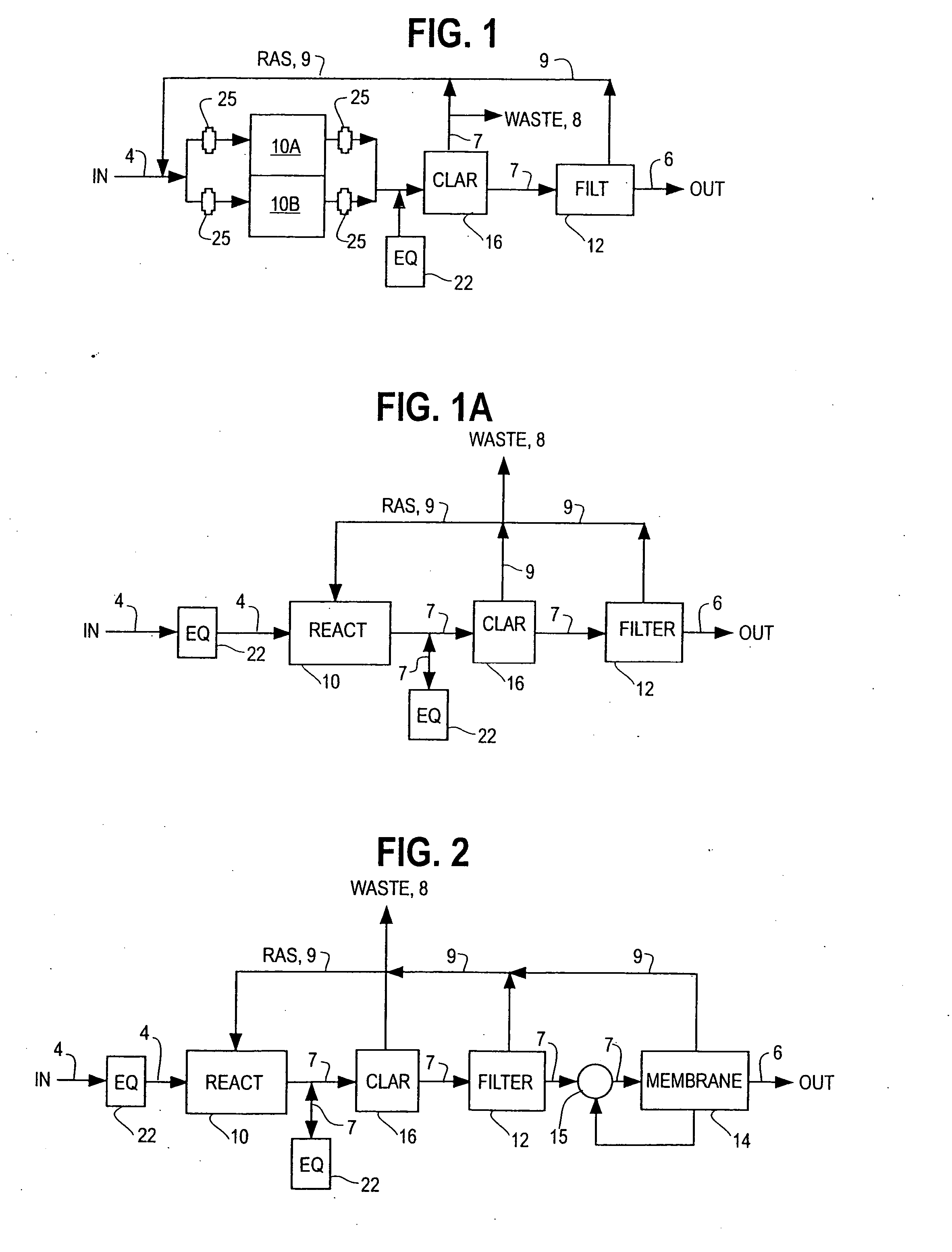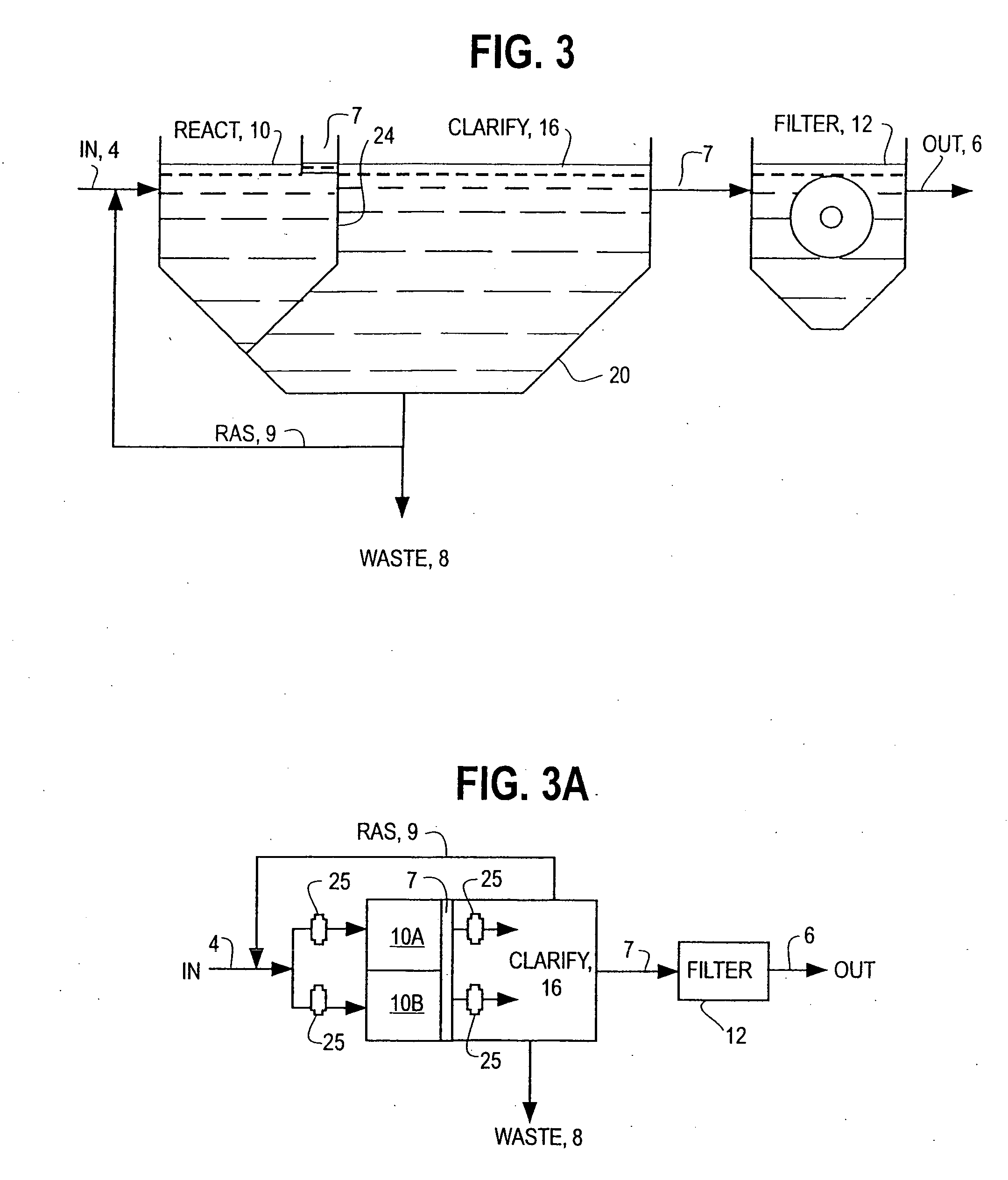Multiple barrier biological treatment systems
a biological treatment system and multi-barrier technology, applied in biological water/sewage treatment, filtration separation, separation processes, etc., can solve the problems of reducing the cost of sbr's annual operation and maintenance, so as to reduce the cost of sbr's and reduce the cost of construction. , the effect of improving the cost effectiveness of sbr systems
- Summary
- Abstract
- Description
- Claims
- Application Information
AI Technical Summary
Benefits of technology
Problems solved by technology
Method used
Image
Examples
Embodiment Construction
[0031] Set forth below is a description of what are currently believed to be the preferred embodiments or best examples of the inventions claimed. Future and present alternatives and modifications to these preferred embodiments are contemplated. Any alternatives or modifications which make insubstantial changes in function, in purpose, in structure or in result are intended to be covered by the claims of this patent.
[0032]FIGS. 1, 3 and 3A show an SBR modified according to one of the preferred embodiments of the present inventions having separate basins for biochemical reaction and clarification, with the biochemical reaction basin 10 also being divided into two biochemical reaction basins 10A and 10B. The influent can be a raw wastewater influent, but is more commonly the effluent from a previous treatment step such as screening, chemical conditioning or other primary treatment processes as are known in the art. The influent channel 4 conveys the wastewater into a biochemical reac...
PUM
| Property | Measurement | Unit |
|---|---|---|
| particle sizes | aaaaa | aaaaa |
| volume | aaaaa | aaaaa |
| size | aaaaa | aaaaa |
Abstract
Description
Claims
Application Information
 Login to View More
Login to View More - R&D
- Intellectual Property
- Life Sciences
- Materials
- Tech Scout
- Unparalleled Data Quality
- Higher Quality Content
- 60% Fewer Hallucinations
Browse by: Latest US Patents, China's latest patents, Technical Efficacy Thesaurus, Application Domain, Technology Topic, Popular Technical Reports.
© 2025 PatSnap. All rights reserved.Legal|Privacy policy|Modern Slavery Act Transparency Statement|Sitemap|About US| Contact US: help@patsnap.com



